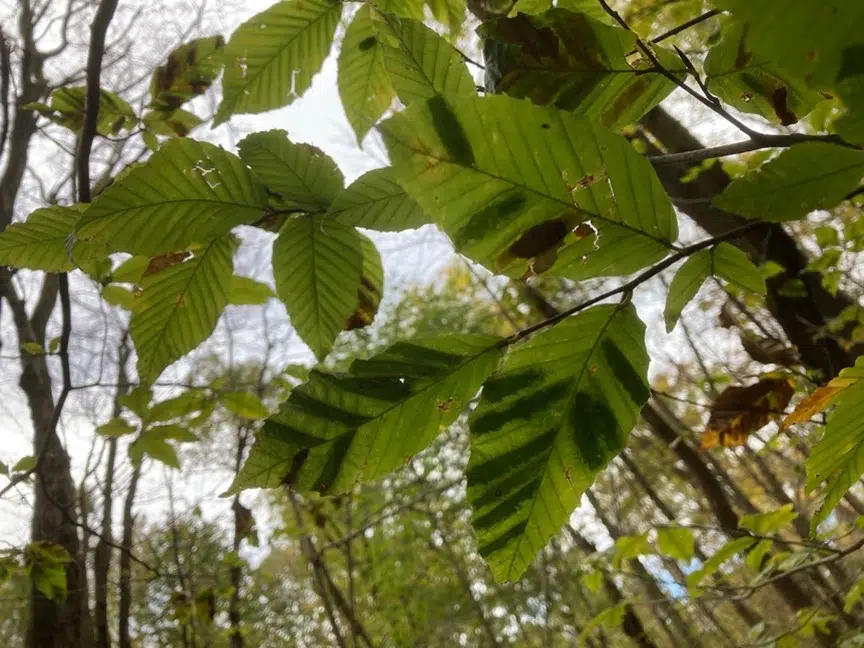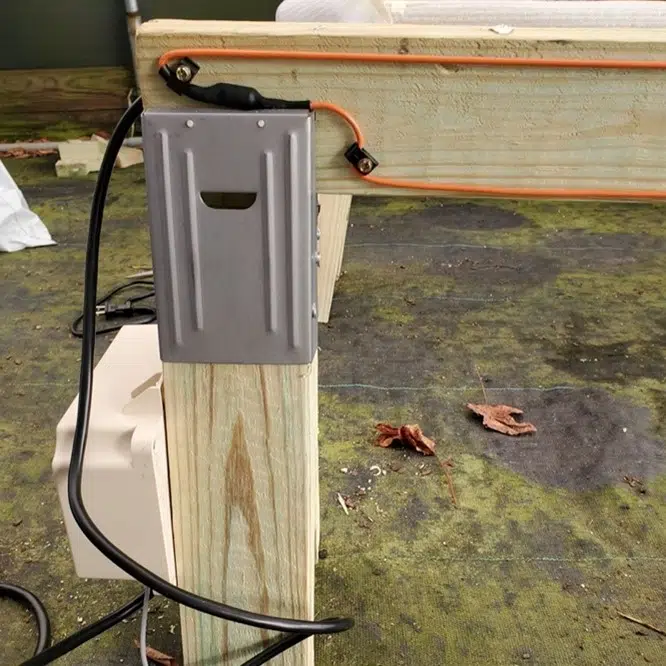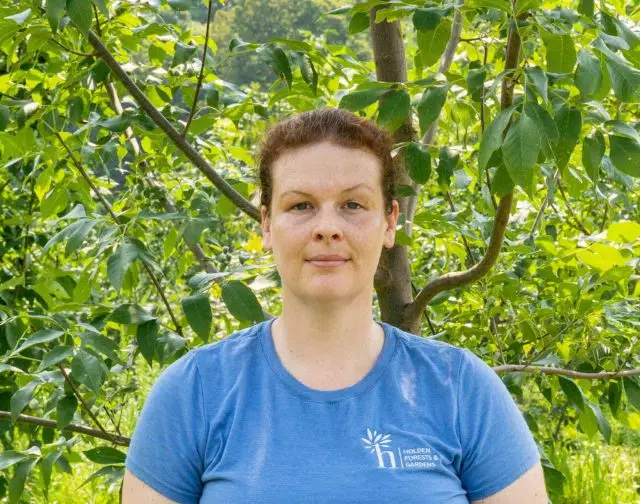
Holden researchers use a technique called grafting to bring trees from the forest back to the lab for study.
By Rachel Kappler & Anna Funk
How do you study a fully grown tree in a regular-sized laboratory? You collect a branch, take it back to the lab, graft it onto a much smaller tree, and study the clone. And that’s exactly what Holden researchers are doing with beech trees from all over the Great Lakes Basin. They’re making these clones because some trees from the region appear to be resistant to pests that cause beech leaf disease, and they want to understand why.
Beech leaf disease
Beech leaf disease was first spotted in northeastern Ohio, and so is an important research topic at Holden. The disease shows up on beech tree leaves as darkening, discoloration, and changes in texture. The most tell-tale sign is darkening in stripes along the veins, a symptom called interveinal banding.

Researchers at Holden were the first to discover the cause of the disease: A newly discovered species of small organisms called nematodes (Litylenchus crenatae mccannii). Now, the researchers are working to quantify how much damage is caused by different amounts of nematodes applied to different trees. This will reveal how well individual trees from different areas can resist nematode damage.
That’s where the clones come in. In order to test individual trees — from the wild, from all over the region — for pest resistance, the researchers have to make clones upon which they can experiment.
How to graft a beech tree
The steps for cloning a tree by grafting are straightforward, but tricky. The process typically works with varying degrees of success, with some tree species being easier to graft than others.
To graft a tree, you start with a branch collected from a tree in the forest that you’d like to study, and a seedling tree that you’ve grown in a pot. If you cut into each one just right, and attach them at the wound, the inner cambium layer inside the two trees will grow together as they heal, becoming, in essence, one tree. The branch from the forest then continues to grow, getting water and soil nutrients from the seedling base in the pot.
For trees like beech and ash, researchers will apply heat in a process called hot-callus grafting to give the wound a boost. Adding heat to the wound as its healing encourages the two branches to callus together better, which increases the likelihood that the process will work and the clone will survive.


After the grafting process is done, it takes four to five weeks for the trees to heal. Since this type of grafting is best done in the dormant season, it’s a long wait for spring to find out if the trees are alive! For instance, this year, we grafted beech trees in February, and even in our warm greenhouse had to wait until April for our new clones to leaf out.

These new clones will allow for continuing research of beech leaf disease. This important research is a part of a broader effort recently launched by Holden and its partners: The Great Lakes Basin Forest Health Collaborative. Researchers, conservation professionals, and individual citizens are joining forces to learn about pest-resistant trees — not just beeches — in hopes that we can soon breed trees for replanting efforts across the region. As our forests are decimated by pests like the emerald ash borer and the nematodes that cause beech leaf disease, the collaborative is working to find ways to keep our forests healthy and sustainable for long into the future.

Rachel Kappler, PhD
Great Lakes Basin Forest Health Collaborative (GLB FHC) Coordinator
Rachel Kappler is the coordinator for partners of the Great Lakes Basin Forest Health Collaborative. She helps facilitate partners tree activities for pest-resistance breeding in current priority species, ash, American beech, American elm and eastern hemlock. She also hosts workshops, webinars, and training for partners to help them achieve their forest health goals.












